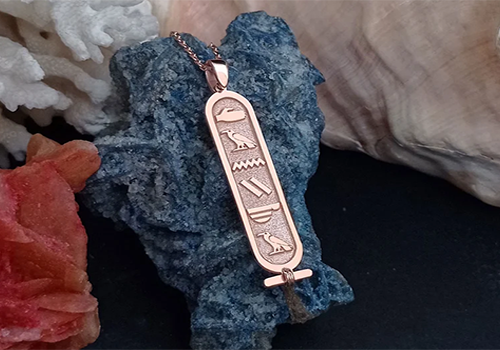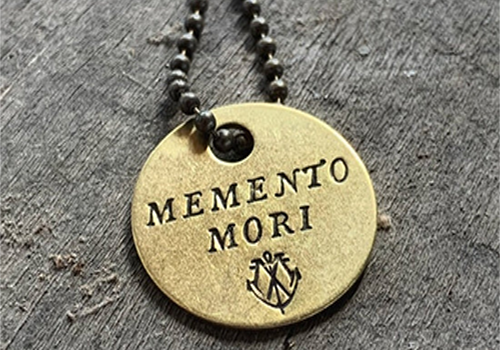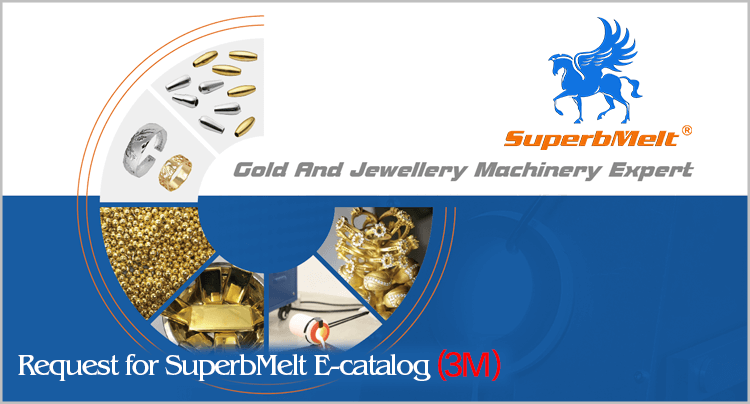Pendant Die
SuperbMelt, as a top mold manufacturer, provides one-stop services to assist customers in completing the production of jewelry pendants.




The Pendant Die is used to create various shapes and patterns for pendant jewelry. It is a specialized tool crafted from sturdy metal or hard alloy materials, tailored to specific shapes and sizes based on customer requirements.
Playing a crucial role in the manufacturing process, the Pendant Die imparts a specific appearance, texture, and shape to pendants, ensuring the final product aligns with customer expectations. With a diverse range of pendant mold types available, it caters to the production needs of pendants with different styles and designs. Pendants are primarily crafted for seeking peace, calming the mind, and enhancing aesthetic appeal. They are often made of precious metals such as gold, silver, platinum, as well as materials like gemstones, crystals, and jade.
SuperbMelt’s Pendant Die has the following benefits and features:
- High Customization: Different pendant forms and patterns may be accommodated by customizing the Pendant Die based on specific design requirements.
- Diverse Designs: The die allows for the production of a wide range of pendant forms and designs, meeting the design requirements of numerous jewelry categories.
- High-Quality Material: The die is made of a strong alloy or high-quality metal, guaranteeing long-term sturdiness and suitability for frequent, intense use.
- Enhanced Production Efficiency: By facilitating a quick and efficient manufacturing process, the Pendant Die, when installed on appropriate equipment, helps jewelry producers increase production efficiency.
- Support for Creative Designs: The die is compatible with a variety of creative and complex designs, giving pendants a one-of-a-kind look that helps create customized jewelry.
- Strict Quality Control: Throughout the production process, exacting levels of quality control are used, with each pendant’s look, size, and texture being examined to guarantee that it complies with design specifications.
- Samples for clients: SuperbMelt creates pendant samples for clients before shipment to guarantee their happiness with the finished product.
The Pendant Die from SuperbMelt may be used in a variety of jewelry-making applications, including the production of pendants from materials like crystals, minerals, and jade, as well as precious metals like gold, silver, and platinum. It can satisfy different clients’ pendant design needs thanks to its high degree of customization and wide range of design assistance. These molds go through rigorous quality check to guarantee that every pendant complies with design guidelines. They are made of premium metal or strong alloy, guaranteeing enduring high-intensity usage. Pendant Die, when installed on matching equipment, supports complex and novel designs while improving production efficiency through an efficient manufacturing process. SuperbMelt assures customers of their pleasure and the caliber of the finished product by giving them sample pendants.
The design of pendant forms and the construction of unique molds are the first steps in the extensive production process that SuperbMelt’s Pendant Die goes through. The steps in the process include material preparation, casting, further processing, and finishing. At every stage, strict quality control procedures are put in place to guarantee that design criteria are followed. This state-of-the-art manufacturing process facilitates complex and creative designs while also increasing production efficiency. To guarantee client pleasure, the last step is to provide them pendant samples.

2 years warranty
The warranty for our machine is one year longer than the warranty provided by other factories.

Strong service team
We will give response within 24 hours against your problem by our professional engineer.
Why SuperbMelt Pendant Die
As a professional coin minting solution supplier, it is our responsibility to provide you with the highest quality
Pendant Die
High Quality
Any Question About SuperbMelt Pendant Die Solution
Superbmelt’s professional technical team and sales team are at your service
(7/24hours service)
Pendant Die Usage and Selection Guide
What is a Pendant Die?
A Pendant Die is a specialized tool used in the jewelry manufacturing industry to create pendants of various shapes, sizes, and designs. It acts as a mold that imparts a precise form, texture, and surface detail to the pendant during the production process.
Crafted from durable metal or hard alloy materials, Pendant Dies are designed to withstand repeated use while maintaining accuracy and consistency. They can be customized based on customer requirements, ensuring that the final jewelry pieces align perfectly with desired aesthetics and market trends.
Pendant Dies play a crucial role in mass production as well as in custom jewelry design. By using these dies, manufacturers can produce pendants that range from simple and elegant to highly intricate designs, suitable for different consumer preferences.
The pendants created through these dies are not only valued for their beauty but also for their symbolic meanings. Across cultures, pendants are worn for peace, spiritual comfort, personal protection, or as a statement of style.
Pendant Dies are compatible with a wide variety of materials, including:
Precious metals such as gold, silver, and platinum
Gemstones and crystals for added brilliance and uniqueness
Jade and natural stones often valued for cultural or spiritual significance
In short, a Pendant Die is more than just a tool—it is the foundation of pendant jewelry production, ensuring each piece is consistent, durable, and aesthetically pleasing, while meeting the diverse needs of jewelry brands and consumers.
1.1, Key FunctionsEarly
Shaping and Forming
Provides pendants with their precise shape, outline, and overall design.
Ensures uniformity across multiple pieces, whether for mass production or custom jewelry.
Texture and Detailing
Imprints patterns, surface textures, or fine decorative details onto the pendant.
Allows for both simple, smooth finishes and complex, artistic designs.
Quality Control
Guarantees consistency in size, thickness, and appearance.
Minimizes variations and defects during the manufacturing process.
Customization
Easily adapted to different design requirements, such as religious symbols, geometric patterns, or personalized shapes.
Supports bespoke production tailored to customer preferences.
Production Efficiency
Speeds up the jewelry-making process compared to manual carving or shaping.
Reduces labor costs while maintaining high-quality standards.
Versatility
Compatible with a wide range of materials, including precious metals, gemstones, crystals, and jade.
Suitable for both traditional and modern jewelry-making techniques.
1.2, Value of Pendants
Symbol of Peace and Protection
Throughout history, pendants have been worn as amulets or charms believed to bring peace, ward off negativity, and provide protection to the wearer.
Spiritual and Emotional Comfort
Pendants often hold personal meaning, serving as a reminder of faith, love, or inner strength. They help calm the mind and offer a sense of reassurance.
Aesthetic Enhancement
As decorative accessories, pendants elevate personal style and complement different fashion looks. From minimalist elegance to bold statement pieces, they highlight individuality.
Cultural and Traditional Significance
Many cultures view pendants as carriers of heritage, symbolism, and identity. They can represent beliefs, milestones, or family traditions passed down through generations.
Expression of Personal Identity
Pendants can be customized to reflect personal stories, zodiac signs, initials, or meaningful motifs, making them unique to each wearer.
Gift of Meaning
Given as gifts, pendants symbolize love, friendship, or blessings. Their lasting value makes them ideal for commemorating special occasions.
1.3, Applicable Materials
Pendant Dies are designed to work with a wide variety of materials, allowing manufacturers to produce pendants in different styles and qualities:
Precious Metals
Gold: Popular for luxury and symbolic jewelry pieces.
Silver: Valued for its brightness and affordability.
Platinum: Known for strength, rarity, and premium appeal.
Gemstones and Crystals
Adds brilliance, color, and uniqueness to pendants.
Commonly used for both fine jewelry and fashion accessories.
Jade and Natural Stones
Favored in many cultures for their spiritual meaning and natural beauty.
Often associated with peace, balance, and protection.
Other Materials
Some Pendant Dies are also adapted for alloys, stainless steel, or mixed materials to meet diverse market demands.
By accommodating such a broad range of materials, Pendant Dies ensure flexibility in jewelry design and production—whether for elegant minimalism, cultural symbolism, or high-end luxury.
1.4, Tips for Choosing a Pendant Die
Define Your Design Requirements
Clearly identify the pendant’s shape, size, and surface details.
Consider whether you need simple patterns or intricate artistic designs.
Check Material Compatibility
Ensure the die is suitable for the materials you’ll be working with—such as gold, silver, platinum, gemstones, or jade.
Different materials may require different die hardness or finishing precision.
Prioritize Durability
Select dies made from high-quality metals or hard alloys.
Durable dies extend service life and reduce replacement costs.
Consider Customization Options
Look for manufacturers that offer bespoke die-making services.
Custom dies allow for personalized logos, cultural motifs, or symbolic designs.
Evaluate Production Scale
For mass production, choose dies designed for efficiency and consistency.
For small-scale or artisanal work, flexibility and fine detailing may be more important.
Choose a Reliable Supplier
Work with an experienced jewelry tool manufacturer.
A good supplier should provide technical support, design consultation, and after-sales service.
Conclusion
Pendant Dies are an essential tool in the production of pendant jewelry, combining precision, durability, and versatility. They allow manufacturers to create pendants with consistent shapes, intricate details, and high-quality finishes while accommodating a wide range of materials—from precious metals to gemstones and jade.
By selecting the right Pendant Die, jewelry makers can ensure that each pendant not only meets aesthetic and design expectations but also carries cultural, emotional, and symbolic value. Whether for personalized custom pieces or large-scale production, Pendant Dies play a crucial role in delivering beautiful, meaningful, and high-quality jewelry that resonates with consumers.
SuperbMelt Pendant Die FAQ
- 1. What is a Pendant Die?
- 2. What materials are Pendant Dies made of?
- 3. How does a Pendant Die contribute to jewelry making?
- 4. What types of designs can Pendant Dies create?
- 5. Are Pendant Dies customizable?
- 6. What is the significance of using Pendant Dies in jewelry production?
- 7. Can Pendant Dies be used for various materials?
- 8. How are Pendant Dies manufactured?
- 9. Do Pendant Dies undergo any treatments?
- 10. What is the lifespan of a Pendant Die?
- 11. Can Pendant Dies be used for mass production?
- 12. How are Pendant Dies maintained?
- 13. What role does precision play in Pendant Die manufacturing?
- 14. Can Pendant Dies be used for intricate designs?
- 15. Are there any safety considerations when using Pendant Dies?
- 16. Do Pendant Dies work with automated machinery?
- 17. Can Pendant Dies be used for custom jewelry orders?
- 18. What types of jewelry are commonly produced using Pendant Dies?
- 19. How are defects in pendant production addressed with Pendant Dies?
- 20. Can Pendant Dies be used for both small and large-sized pendants?
- 21. What factors influence the cost of manufacturing Pendant Dies?
- 22. Are there any environmental considerations in Pendant Die production?
- 23. Can Pendant Dies be used for non-metallic materials?
- 24. How can one choose the right Pendant Die for a specific design?
- 25. What maintenance practices are recommended for Pendant Dies?
- 26. Can Pendant Dies be used for gemstone-embedded designs?
- 27. How does the quality of a Pendant Die impact the final jewelry product?
- 28. Are there any technological advancements in Pendant Die manufacturing?
- 29. Can Pendant Dies be repaired or modified?
- 30. What support services are offered with the purchase of Pendant Dies?
1. What is a Pendant Die?
A Pendant Die is a specialized tool used in jewelry manufacturing to shape and mold pendants into specific designs.
2. What materials are Pendant Dies made of?
Pendant Dies are typically made of durable metals or hard alloys, chosen for their strength and longevity.
3. How does a Pendant Die contribute to jewelry making?
A Pendant Die plays a crucial role in giving pendants their specific appearance, texture, and shape during the manufacturing process.
4. What types of designs can Pendant Dies create?
Pendant Dies can create a wide variety of pendant shapes and patterns, catering to different styles and design preferences.
5. Are Pendant Dies customizable?
Yes, Pendant Dies can be customized to meet specific design requirements, allowing for a high degree of design flexibility.
6. What is the significance of using Pendant Dies in jewelry production?
Pendant Dies ensure that each pendant produced is consistent in appearance and meets the desired design standards.
7. Can Pendant Dies be used for various materials?
Pendant Dies are versatile and can be used for different materials, including precious metals like gold, silver, and platinum, as well as gemstones.
8. How are Pendant Dies manufactured?
Pendant Dies are manufactured through processes like die casting or machining, using high-quality materials and precision techniques.
9. Do Pendant Dies undergo any treatments?
Depending on the requirements, Pendant Dies may undergo treatments such as heat treatment or surface coatings to enhance their properties.
10. What is the lifespan of a Pendant Die?
The lifespan of a Pendant Die depends on factors like material quality, usage, and maintenance but is generally designed for long-term durability.
11. Can Pendant Dies be used for mass production?
Yes, Pendant Dies are often used for mass production, providing efficiency and consistency in large-scale jewelry manufacturing.
12. How are Pendant Dies maintained?
Pendant Dies should be cleaned regularly, and proper lubrication may be required to ensure smooth operation and longevity.
13. What role does precision play in Pendant Die manufacturing?
Precision is crucial in Pendant Die manufacturing to achieve accurate and consistent results in shaping the jewelry.
14. Can Pendant Dies be used for intricate designs?
Yes, Pendant Dies can be designed for intricate patterns and detailed designs, allowing for the creation of unique and artistic pendants.
15. Are there any safety considerations when using Pendant Dies?
Safety precautions should be followed, including using protective gear, especially when operating machinery associated with Pendant Dies.
16. Do Pendant Dies work with automated machinery?
Pendant Dies can be integrated with automated machinery for efficient and streamlined production processes.
17.Can Pendant Dies be used for custom jewelry orders?
Yes, Pendant Dies are often employed for custom jewelry orders, allowing for the creation of unique and personalized pendant designs.
18. What types of jewelry are commonly produced using Pendant Dies?
Pendant Dies are used for various types of jewelry, including necklaces, bracelets, earrings, and other accessories.
19. How are defects in pendant production addressed with Pendant Dies?
Quality control measures, such as inspections, are implemented to identify and address defects in pendant production using Pendant Dies.
20. Can Pendant Dies be used for both small and large-sized pendants?
Yes, Pendant Dies can be designed to accommodate different sizes, making them suitable for both small and large pendant designs.
21. What factors influence the cost of manufacturing Pendant Dies?
Factors such as material choice, complexity of design, and customization requirements can influence the cost of manufacturing Pendant Dies.
22. Are there any environmental considerations in Pendant Die production?
Sustainable practices may be employed in Pendant Die production, including the use of eco-friendly materials and efficient manufacturing processes.
23. Can Pendant Dies be used for non-metallic materials?
Yes, Pendant Dies can be designed for use with non-metallic materials like acrylic, providing versatility in jewelry design.
24. How can one choose the right Pendant Die for a specific design?
Choosing the right Pendant Die involves considering the design requirements, material compatibility, and customization options available.
25. What maintenance practices are recommended for Pendant Dies?
Regular cleaning, proper storage, and occasional inspections are recommended maintenance practices for Pendant Dies.
26. Can Pendant Dies be used for gemstone-embedded designs?
Yes, Pendant Dies can be designed to accommodate gemstones, allowing for the creation of intricate and embellished pendant designs.
27. How does the quality of a Pendant Die impact the final jewelry product?
The quality of a Pendant Die directly influences the precision and consistency of the final jewelry product.
28. Are there any technological advancements in Pendant Die manufacturing?
Advancements in technology, such as computer-aided design (CAD) and 3D printing, have influenced Pendant Die manufacturing processes.
29. Can Pendant Dies be repaired or modified?
Depending on the damage or modification required, Pendant Dies may be repaired or modified by skilled technicians.
30. What support services are offered with the purchase of Pendant Dies?
Manufacturers may offer support services, including training, technical assistance, and guidance, with the purchase of Pendant Dies.



 © Copyright 2008-2021 Superb Electromachinery Co., Limited
© Copyright 2008-2021 Superb Electromachinery Co., Limited